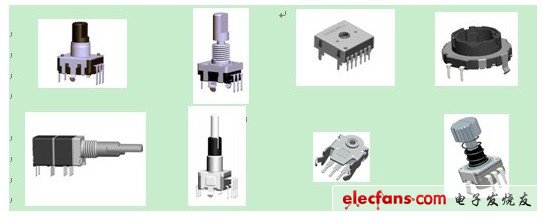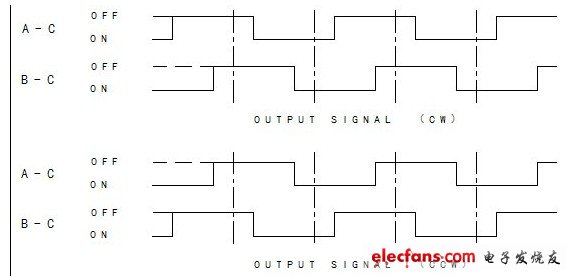The encoder component is a new type of digital electronic component that can replace the carbon film potentiometer, and has a good market application prospect and development space. Widely used in household appliances, car audio, communication equipment, multimedia, audio, instrumentation equipment, CNC machine tools, medical equipment, engineering machinery, aerospace equipment, intelligent control, Internet of Things terminal equipment, etc., has great value for promotion and application. 1 Encoder classification: Divided into product components by encoder structure and encoder components; According to the way of use, it is divided into: rotary and linear; According to the technical principle, it is divided into: contact type (brush mechanical contact) and non-contact type (including: optical type, photoelectric induction type, magnetic induction type, magnetic induction type...); According to the working principle, it is divided into: incremental type and absolute type. 2 part encoder component products (Figure 1) (Figure 1: Encoder component) 3 encoder components work This article will introduce the working principle and application of incremental encoder and absolute encoder. In the body of the encoder (pulse code disc), the metal conduction area and the plastic insulation area are prepared in advance according to different product requirements, and the angle and shape of the conduction area and the insulation area determine the final signal output form of the product. 3.1 incremental encoder: During the rotation process, two or more groups of encoders with periodic changes and phase timing differences can be output. (1) Features: a) can rotate 360 ​​degrees; b) During the rotation process, it can generate output signals with high and low periodic changes, without fixed starting point and end point; c) can stop or start at any position; d) When using, generally do not pay attention to the results of stopping the position, only the signal changes of the process. (2) Product construction: The product is mainly composed of a shaft core, a body, a bracket, a positioning piece, a contact brush and the like. (3) Output signal: The rotating brush core drives the contact brush to generate on/off, and outputs two or more sets of pulse signals with periodic changes and phase timing differences. a) When outputting two sets of signals, it is generally divided into: A phase and B phase, and the phase difference between the phases is 1/4 pulse period delayed by each other. According to the sequence of switching, the rotation direction of the product (signal increment or decrement) is judged. As shown in Figure 2: (Figure 2: two sets of signal square waves) b) When three sets of signals are output, they are generally divided into: A phase and B phase C phase, and the signal is incremented or decremented by the sequence of the three groups of signals (time difference), and the three groups of signals are in the on state. Disjoint, so that the phase difference of the finished product is relatively large. Signal increase and decrease is easier to identify, more stable, and less prone to garbled, as shown in Figure 3: (Figure 3: three sets of signal square waves) Electric Ceramic Cooktop,Ceramic Cooktop,Electric Stovetop,Electric Cooktops Ceramic Stove Shaoxing Haoda Electrical Appliance Co.,Ltd , https://www.zjhaoda.com

